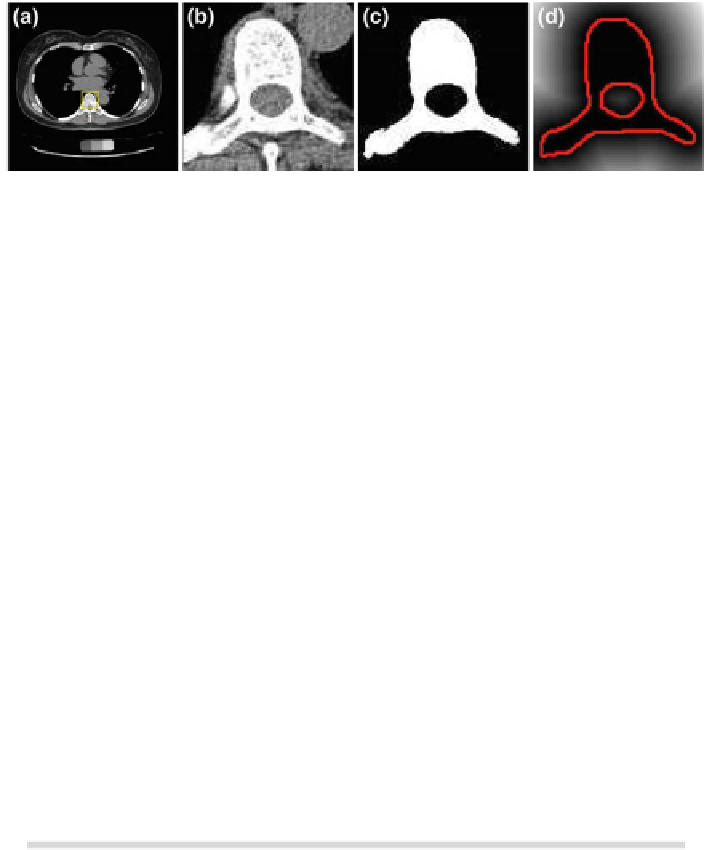Information Technology Reference
In-Depth Information
Table 5 Graph edges
weights
Edge
Weight
For
f
p
;
q
g
V
ð
f
p
;
f
q
Þ
f
p
;
q
g2N
cm
f
s
;
p
g
log½P
ð
I
p
j
1
Þ
P
ð
d
p
j
1
Þ
p
2V
1
p
2O
0
p
2B
cm
f
p
;
t
g
log½P
ð
I
p
j
0
Þ
P
ð
d
p
j
0
Þ
p
2V
0
p
2O
1
p
2B
Fig. 34 An example of the initial labeling. a A CT slice of vertebral body. (yellow box illustrates
detected VB region). b Detection of the VB region. c The initial labeling, f
. d The SDF of the
initial segmentation which is used in the registration phase (see Algorithm 3). Red color shows the
zero level contour
Algorithm 3 Given: The input VB set of images, the ESP (J as a source
information), the probabilistic 3D shape model (d).
Objective: To obtain the desired labeling (f) using the required transfor-
mation matrix (T).
1. Detect the VB region using [
40
]
2. Obtain the initial segmentation (f
) using graph cuts which integrates the
intensity and spatial interaction models only.
3. Register the shape prior to the initially segmented volume. J and f
will be
the source and target information, respectively. After the transformation,
the embedded shape model and its features are described as follows:
After each voxel p
2P
s
is transformed to the new voxel
b
p, the shape
new
,
new
, and
model is registered to the volume domain. We obtain new
O
B
new
V
:
The object/variability surface C
new
OV
is updated as well.
Hence, new iso-surfaces at the same distances, they have the same
probabilistic distance value with the iso-surfaces which are obtained













